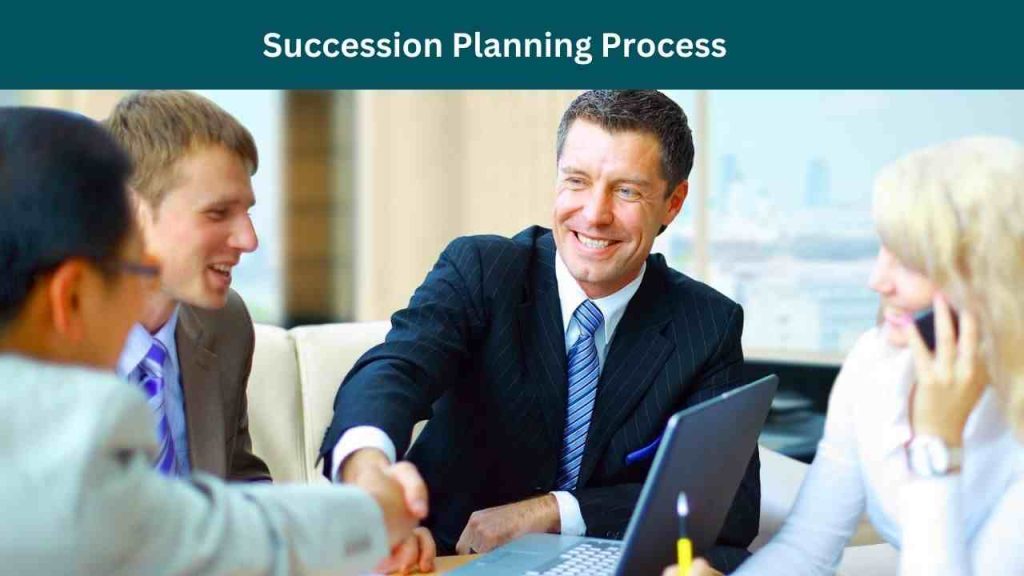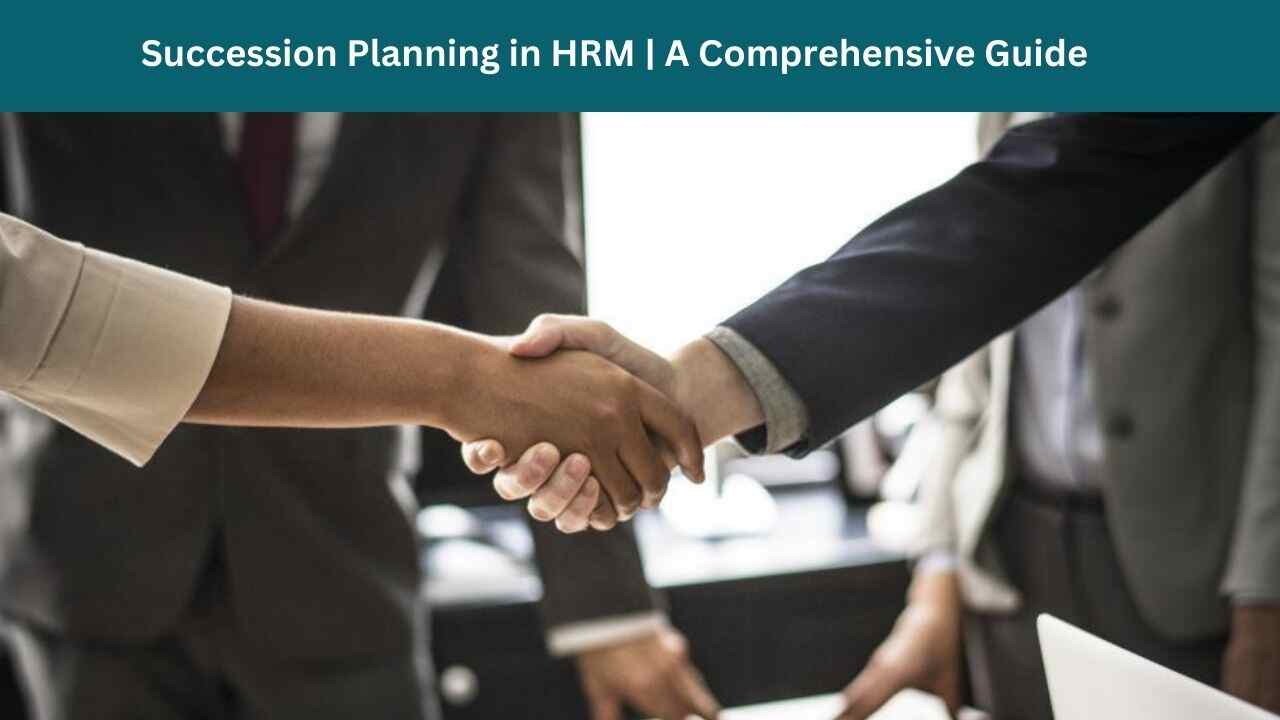Succession Planning in HRM | A Comprehensive Guide
In today’s fast-evolving business world, securing the future of an organization relies heavily on succession planning. Succession planning is the strategic approach to identifying and developing potential future leaders within a company. It ensures that critical roles remain filled with capable individuals, maintaining stability, growth, and continuity even in the face of unexpected departures.
Succession planning in HRM goes beyond simply filling roles; it’s about nurturing leadership, retaining top talent, and fostering a culture of advancement. This guide explores into why succession planning is essential, the best practices for creating effective plans and the step-by-step process to design a robust succession framework.
What is Succession Planning in HRM?

Succession planning is the systematic approach of identifying, mentoring, and preparing employees to fill high-impact positions within an organization. This planning prioritizes roles crucial to organizational performance and continuity—such as executive or senior management positions—and aims to ensure a seamless transition when a vacancy arises.
Key Aspects of Succession Planning:
- Critical Role Focus: Succession planning should target roles that directly impact organizational success, such as the CEO, senior managers, and specialized positions that drive key functions.
- Talent Identification and Development: Identifying high-potential employees and offering them leadership and development opportunities.
- Continuity Assurance: Ensuring that talent is ready to step into essential roles immediately, minimizing the disruption of sudden leadership transitions.
Why Succession Planning Matters in HRM
A well-designed succession plan brings multiple benefits to an organization:
- Business Continuity: Prevents disruptions by ensuring ready candidates for critical roles.
- Knowledge Retention: Captures institutional knowledge, reducing the loss of expertise when senior leaders depart.
- Employee Engagement and Retention: Clearly defined career paths boost motivation and loyalty among high-potential employees.
- Risk Management: Reduces the risks associated with leadership gaps, such as decreased productivity, team morale, and loss of stakeholder confidence.
Role of HR in Succession Planning
The Human Resources or HR department is pivotal in designing and executing succession plans. Here’s how HR contributes:
- Talent Mapping and Development: HR identifies talent across departments and maps them to future leadership roles.
- Alignment with Organizational Goals: HR ensures the succession plan aligns with the company’s long-term objectives.
- Facilitating Learning Opportunities: From leadership training to mentorship, HR implements programs to groom potential successors.
- Monitoring and Feedback: HR tracks progress and provides feedback to future leaders, ensuring they are equipped to handle leadership roles.
Risks of Neglecting Succession Planning
Failing to establish a robust succession plan exposes an organization to several significant risks:
- Loss of Critical Talent and Knowledge: Key employees hold valuable experience and expertise. When they leave unexpectedly, an organization risks losing vital knowledge that can’t easily be replaced.
- Increased Recruitment and Training Costs: Without a succession plan, organizations may face sudden demands of recruitment of vital employees, leading to higher recruitment expenses and extended training times to bring new hires up to speed.
- Employee Uncertainty and Low Morale: A lack of clarity around future leadership can create uncertainty, leading to reduced morale and potential turnover among high-potential employees who might seek career growth elsewhere.
- Operational Disruptions: Without prepared successors, transitions can disrupt productivity, impacting daily operations and potentially damaging relationships with clients and stakeholders.
- Decreased Organizational Adaptability: Companies without succession plans often struggle to respond to change, limiting their ability to stay competitive in rapidly shifting markets.
Addressing Common Challenges in Succession Planning
While succession planning brings numerous benefits, organizations often face obstacles in implementing an effective process. Here are some of the most common challenges and strategies to overcome them:
- Lack of Leadership Buy-In: Without commitment from top leadership, succession plans may lose priority. HR can overcome this by highlighting the business risks of unprepared transitions and demonstrating the long-term value of proactive planning.
- Inadequate Resources and Training: Some organizations lack the budget or resources for comprehensive leadership development. Solutions include leveraging low-cost mentorship programs, creating cross-functional projects, and utilizing online training resources.
- Resistance to Change: Employees or leaders may resist succession planning due to uncertainty about new roles. Clear communication about the process and how it benefits employees’ career progression can alleviate concerns and increase engagement.
- Insufficient Diversity: Many companies overlook the importance of diversity in succession planning, leading to homogenous leadership. Establishing diversity goals within the succession planning framework can help organizations address this issue.
- High Potential Turnover: Retaining high-potential employees is critical to succession planning. Ensure employees see clear growth opportunities through transparent development plans and regular check-ins to boost retention.
Succession Planning Framework
Building an effective succession plan requires a structured framework. Here’s a breakdown of the key elements:
- Identify Critical Roles: Focus on roles that have a significant impact on the organization’s operations and long-term strategy, such as executives, department heads, or technical experts.
- Select High-Potential Candidates: Using performance evaluations, 360-degree feedback, and skills assessments, HR identifies employees with the potential to succeed in critical roles. Consider diversity and inclusiveness to ensure a variety of perspectives in future leadership.
- Develop Future Leaders: High-potential employees should receive tailored development plans, including mentorship, training and leadership development programs.
- Create a Succession Matrix: Map key roles alongside potential successors and their readiness level, allowing for an easy visual reference that informs leadership decisions.
- Implement and Track Progress: Execute development plans, monitor progress, and make adjustments as needed to keep successors on track for future roles.
This framework not only ensures that the organization has a steady pipeline of qualified candidates but also aligns leadership development with broader business goals.
Succession Planning Table with Key Details
This table offers a well-rounded view of succession planning, allowing decision-makers to see both readiness levels and development needs at a glance.
| Position | Current Employee | Potential Successor | Readiness Level | Development Focus |
|---|---|---|---|---|
| CEO | Alex Thompson | Jordan Clark | High | Executive leadership, strategic vision |
| VP of Finance | Linda White | Sarah Kim | Medium | Cross-functional leadership, budgeting |
| VP of Operations | Michael Brown | David Lee | Low | Operational management, team leadership |
| Director of Marketing | Nancy Williams | Priya Nair | High | Strategic marketing, stakeholder engagement |
| Director of Talent Acquisition | Carol Smith | Ben Johnson | Medium | High-volume recruitment, workforce planning |
| Director of Production | Lisa Chang | Tom Martinez | Medium | Process optimization, quality management |
| Director of Quality Control | Sam Peterson | Emily Chen | High | Quality assurance, regulatory compliance |
| Director of Employee Development | Mark Reed | Jessica Green | Medium | Leadership coaching, employee engagement |
| Director of Financial Planning | James Lopez | Robert Tan | Low | Financial analysis, forecasting |
Note
- Readiness Level: Indicates how prepared the successor is to step into the role (High, Medium, Low).
- Development Focus: Specific areas for development to prepare successors for their future roles.
Step-by-Step Succession Planning Process

Creating a succession plan requires a clear, phased approach. The following steps guide HR teams in developing a practical, adaptable plan:
- Conduct Talent Assessment and Gap Analysis
- Start with a comprehensive assessment of the current talent pool. Identify high-potential employees, analyze their skills, and evaluate their readiness for potential roles.
- Perform a gap analysis to understand where current skills fall short and what development areas need attention.
- Define Succession Criteria for Key Roles
- Outline specific criteria for each critical position, such as required competencies, years of experience, and any specialized skills.
- Define how candidates will be evaluated for these roles, ensuring alignment with organizational values and long-term goals.
- Develop Individual Development Plans (IDPs)
- Create customized development plans that include training, mentorship, job rotation, and cross-functional project experience to prepare successors.
- IDPs should address specific skill gaps identified in the talent assessment phase and include measurable milestones.
- Implement Developmental Activities
- Begin implementing activities outlined in each successor’s Implement Development Plan. Options include:
- Mentorship Programs: Pair potential successors with experienced mentors for guidance.
- Leadership Training: Provide formal leadership courses to develop managerial skills.
- Stretch Assignments: Assign projects that challenge employees and expose them to new areas of responsibility.
- Track progress to ensure successors meet their development milestones.
- Begin implementing activities outlined in each successor’s Implement Development Plan. Options include:
- Create and Maintain a Succession Matrix
- Develop a succession matrix that visually maps each critical role with at least two potential successors, noting their current readiness levels.
- This matrix should be regularly reviewed and updated based on changing business needs and employee development progress.
- Review and Adjust the Succession Plan Regularly
- Conduct quarterly or biannual reviews to assess the effectiveness of development activities and make necessary adjustments.
- Reassess key roles and successors as business priorities evolve to ensure alignment with strategic objectives.
Key Tools for Succession Planning
To enhance the effectiveness of succession planning, consider using tools such as:
- Performance Management Systems: Track employee performance, skills assessments, and feedback.
- 360-Degree Feedback Tools: Gather insights from peers, subordinates, and supervisors to evaluate leadership potential.
- Talent Management Software: Use software to monitor employee progression and match skill sets with future roles.
These tools streamline the succession planning process, providing valuable insights and data-driven support for HR and leadership teams.
Best Practices in Succession Planning
To maximize the success of a succession plan, organizations should integrate the following best practices:
- Adopt a Long-Term Perspective: Succession planning should be an ongoing process rather than a one-time effort. Taking a long-term approach allows organizations to prepare leaders who are fully aligned with company values and goals.
- Foster a Culture of Leadership Development: Encourage a company-wide mindset that supports continuous learning and growth. Leaders should be actively involved in mentoring and developing high-potential employees, creating a strong internal pipeline.
- Focus on Diversity and Inclusion: Ensure that succession planning processes incorporate diversity to foster varied perspectives at the leadership level. Diverse leadership has been shown to improve decision-making and drive innovation.
- Integrate Succession Planning with Talent Management: Aligning succession planning with talent management efforts creates a seamless approach to employee growth and retention. For example, use employee development programs to prepare high-potential employees for future roles.
- Regularly Monitor and Evaluate: Track the progress of successors and adjust plans as necessary. Key performance indicators (KPIs) such as high-potential turnover, bench strength, and internal promotion rates help in evaluating the effectiveness of succession planning.
Real-World Examples of Succession Planning in Action
Studying successful succession planning strategies from various companies provides valuable insights:
- IBM: IBM has long been recognized for its structured approach to leadership transitions. When former CEO Ginni Rometty transitioned out, IBM’s succession planning ensured that her successor, Arvind Krishna, was well-prepared. The process included mentoring, progressive leadership responsibilities, and cross-functional experience, which positioned Krishna to continue IBM’s strategic direction with minimal disruption.
- Disney: Disney’s CEO succession strategy is a well-known example of effective planning. Bob Iger, who served as CEO for many years, identified and mentored his successor, Bob Chapek. Disney’s approach included involving Chapek in high-stakes projects and strategic decisions, ensuring he was equipped to maintain Disney’s creative and operational direction. This structured process allowed for a seamless transition when Iger stepped down.
- Procter & Gamble (P&G): P&G is another example of meticulous succession planning. The company invests heavily in leadership development at all levels. Before stepping down, former CEO A.G. Lafley worked closely with his successor, David Taylor, providing him with insights and ensuring continuity. P&G’s long-term focus on developing internal candidates for senior roles has allowed the company to sustain consistent leadership transitions over the years.
Conclusion
Effective succession planning is essential for sustaining organizational growth, retaining critical knowledge, and ensuring leadership continuity. The succession planning process equips companies with a structured approach to developing future leaders while fostering a resilient workforce ready to navigate future challenges.
By implementing the mentioned steps in succession planning process, organizations can build a robust succession plan that not only secures leadership continuity but also supports a vibrant, future-ready workforce.

